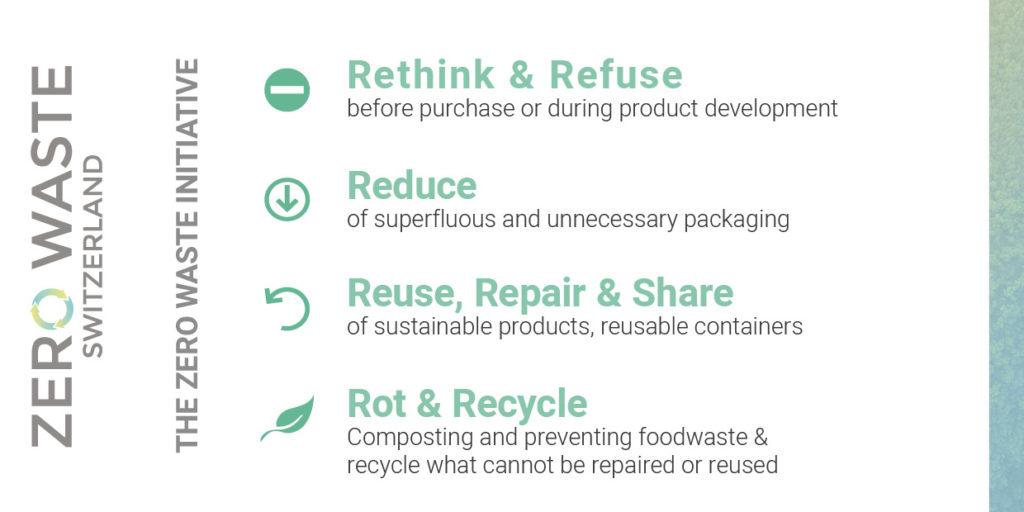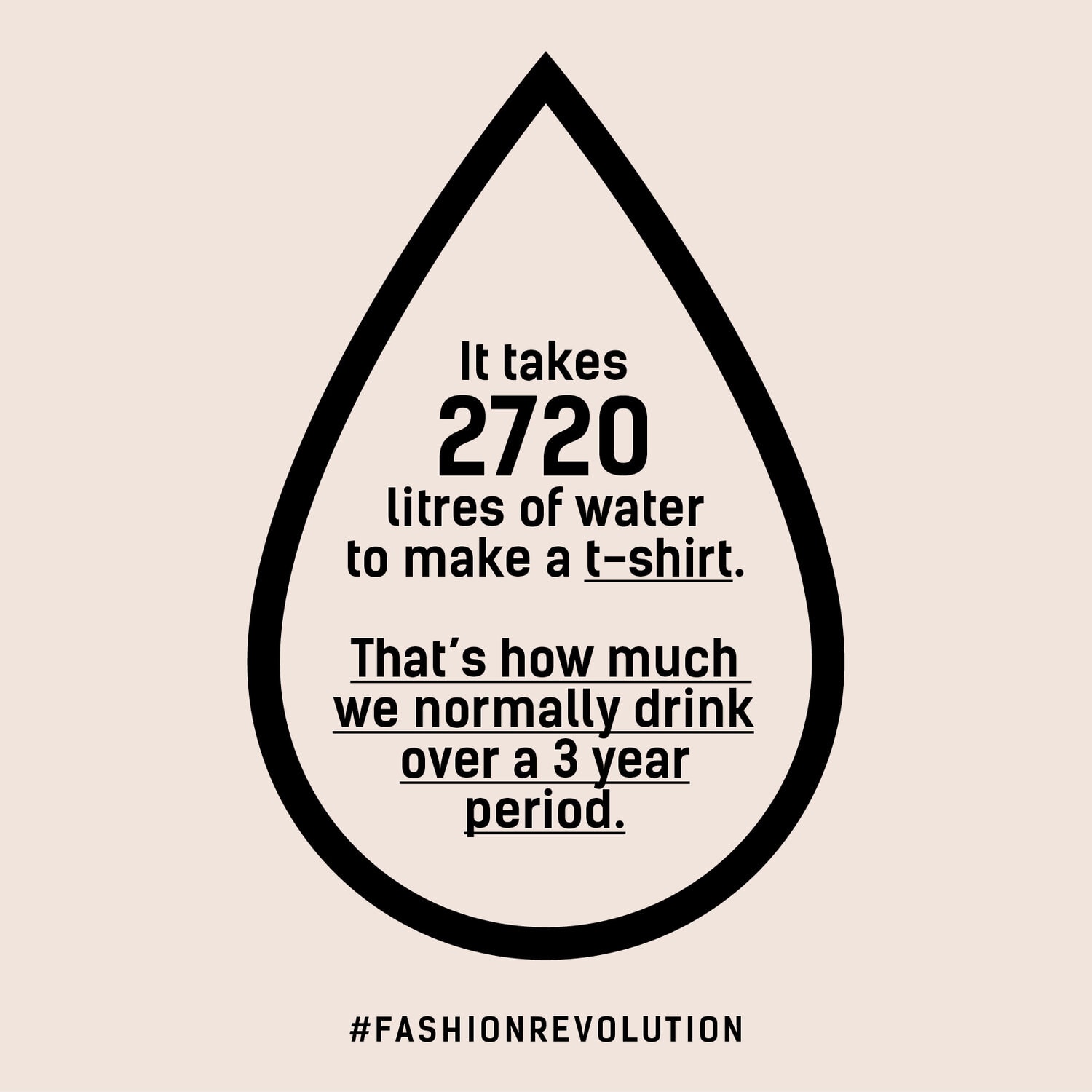80 billion clothes are produced in the world every year.
Their manufacture has a much greater environmental and social burden than we might imagine, as we can see on the picture on the left which shows what is needed for the production of a single T-shirt.
In Switzerland, more than 100,000 tonnes of new clothing are sold every year (source), while at the same time 57,000 tonnes of used textiles are collected by organisations working in the textile recycling industry. In addition, a large proportion of these garments are irreproachable. On average, around 11 kilos of textiles per person are thrown away (source FOEN).
To avoid this waste, here are some tips based on the R principle.

Refuse and rethink
Instead of a shopping spree, offer other activities such as a walk in the forest, a visit to an exhibition, a movie at the cinema, or just a drink with friends; it will be just as much fun, if not more.
Just before you go shopping (real or virtual), ask yourself the following questions:
- Do I really need this garment?
- Will I have a lot of fun wearing it?
- Am I convinced of this purchase? Maybe I am only tempted because it is 50% off…
If the answer to one or more of these questions is no, then stop wasting your money and get out of the store (or website). You can always come back if you change your mind.
If by habit or lack of ideas you tend to offer clothes or accessories as gifts, here are some ideas to innovate for children’s birthdays or Christmas gifts.
Reduce
On average, 30% of the clothes we own are not worn and sleep in our wardrobes. Is it really useful to own 20 pairs of pants, 30 T-shirts and 15 pairs of shoes? The answer is probably no.
Sort through your clothes and take out the ones you no longer wear. You can donate them to charity (e.g. Caritas distributes them to disadvantaged people in Switzerland). Good quality, old-fashioned clothes will even help you get some money back and these are welcome in second-hand circuits. Avoid replacing them with new ones, a less furnished wardrobe with only the pieces we like is much more pleasant and saves you time.
Reuse and share
Address bookstores, second-hand shops, consignment stores, ad or auction websites, local groups on social networks, etc. There is no shortage of places to buy second-hand clothes and you can find them on our map of the Zero Waste friendly shops.
There is currently such an overabundance of clothing due to the “Fast Fashion” phenomenon that it takes a little time to find the right shops and a little experience to find good quality pieces. That said, the good news is that the prices are unbeatable, so you can save a lot of money while reducing your environmental impact. What’s more, the money spent often helps to create local jobs.
Repair
Your clothes with holes, too large or old-fashioned deserve a second chance! Especially if you like them a lot or the fabric is interesting. A sewing machine is your best ally in these cases (no need to buy one, for occasional use it is better to borrow it). Internet is full of tutorials to transform old-fashioned or too large pieces into unique pieces (upcycling). All kinds of repairs or alterations are also offered by professional sewing workshops.
Recycle
Used clothing can also be deposited in the containers provided for this purpose. Several organisations manage their valorisation and export in Switzerland. The proportion of what is valued in Switzerland or exported depends on this. Here are a few examples:
- Textura collects 1,800 tonnes in almost 300 containers in the canton of Vaud and gives the items a second life locally by selling them in Ateapic shops. This is also the case for the containers of the Fribourg Croix-Rouge, which are revalued locally, particularly in the Zig-Zag Boutiques.
- Tell-Tex has 3,000 containers in Switzerland and a sorting centre in Safenwil. A small part is donated free of charge to the inhabitants of the mountain regions in collaboration with the Swiss Mountain Aid, but the vast majority is exported.
- TEXAID and its subsidiary Contex with its more than 6’000 containers, 35’000 tons collected all over Switzerland and its sorting plants – 1 in Switzerland and 5 abroad – is the biggest player. The garments are exported for resale abroad. According to TEXAID, around 35% of the clothing collected is considered unsuitable for wearing. They are normally recycled as rags (15%) or insulating materials (15%), while 5% are incinerated.
A few links
- Fashion Revolution Switzerland
- « Prêt-à-Jeter », television program from the RTS, the 1st on clothing waste (French)
- Waste: clothing and shoes, Federal Office for the Environment (FOEN)
- Fashion, investigations of the association Public Eye
- Second hand instructions for use, article from Sophie Reymondin for Femina (French)
- FAIR’ACT, sustainable fashion association (French)
- Walk-in-Closet and Sipy, MonVideDressing, Vide-Dressing, clothing exchanges (dressing-room) in several cities of the country
- www.reparateurs.ch, to find a sewing shop or a shoemaker’s workshop (French)
Other tricks
- Bea Johnson’s book Zero Waste Home
- Marie Kondo’s book The Magic of Tidying Up
